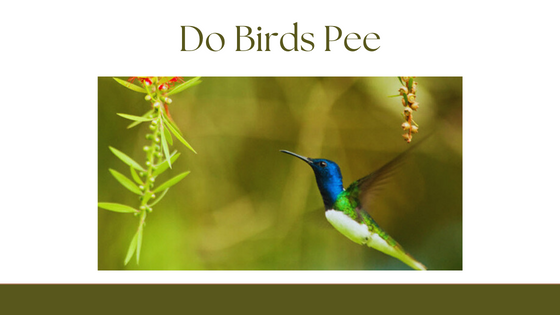Birds, known for their captivating melodies and breathtaking colors, are beautiful and fascinating creatures. However, if you have ever watched one closely, you may have noticed the absence of the familiar ‘bathroom habits’ that characterize other animals. So, the question arises: Do birds pee and poop from the same hole? The surprising answer is, yes, they do. This unique trait stems from their unique physiological structure.
Understanding Avian Biology
Unlike most mammals, birds don’t have separate exits for urine and feces. Instead, they eliminate both from a single opening known as the cloaca. The cloaca, an integral part of avian physiology, acts as a multi-purpose opening through which birds pass urine, feces, and even lay eggs.
What is Cloaca?
The term ‘cloaca’ comes from the Latin word for ‘sewer.’ It’s a common feature among amphibians, reptiles, and birds, serving as the end of the digestive, urinary, and reproductive systems. In birds, the urinary, digestive, and reproductive tracts all end in the cloaca, hence urine, feces, and eggs exit the body through this same opening.

Disposal Process
Let’s see how do birds pee and how do they poop. When a bird needs to relieve itself, it simultaneously expels a combination of uric acid (the avian equivalent of urine) and feces from the cloaca. The waste products often appear fused together, with the feces often seen in the center, surrounded by a white ring, or cap, of uric acid.
It’s essential to note that bird ‘urine’ differs from that of mammals. While mammalian urine is primarily water with dissolved waste products, birds excrete a pasty substance known as uric acid. Uric acid, being less water-intensive than urine, helps conserving water—an important survival advantage for birds.
Survival Advantage
Bird’s unique waste disposal method offers a significant survival advantage. With a single exit point, the avian system is lighter, simpler, and thus more efficient, presenting an evolutionary advantage for flight. Mammalian urinary systems require more internal plumbing, including two kidneys, a bladder, and the associated ductwork. However, birds’ streamlined system negates the need for these extra components, reducing overall body weight, a critical factor for efficient flight.
In Conclusion
It may seem odd, but the fact that birds pee and poop from the same hole, the cloaca, is a testament to the marvels of nature and the way organisms adapt to their specific needs and environments. While it is different from how most mammals handle waste disposal, it is perfectly suited for the bird’s lifestyle. This adaptation to a consolidated waste management system not only supports their ability to fly but also offers practical benefits in water conservation.




